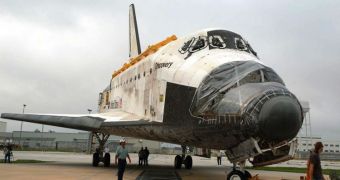When the White House called on the National Academies to determine precisely how many astronauts NASA needed to conduct space exploration after the retirement of the shuttles, the numbers the organization returned were a lot lower than what is actually needed.
According to a new report released by the National Research Council (NRC), it would appear that the American space agency is currently understaffed, not retaining a sufficiently large pool of astronauts to select from for participation in future exploration missions.
The NRC document concludes by arguing that so few astronauts will impair NASA's abilities to conduct human space flight operations at their full potential. In such a scenario, many mission objectives may remain uncompleted due to insufficient manpower.
The situation is made even worse by the fact that more and more astronauts are leaving on their own, with each passing month. At this time, NASA only has 61 astronauts, a number greatly smaller than the 150 astronauts it had access to back in 1999, Universe Today reports.
The International Space Station (ISS) and the Orion Multi-Purpose Crew Exploration Vehicle (MPCV) are the two main focuses of NASA's Astronaut Corps at this time, and the agency needs a stable number of candidates from which to select participants in these missions.
The Russian Federal Space Agency, the European Space Agency, the Japanese Aerospace Exploration Agency and Canadian Space Agency are all depending on NASA to fulfill its part of the workload when it comes to keeping the ISS operational until 2020.
According to the NRC document, one astronaut leaves the space agency every two months. At this rate, only a few of them will remain available in a couple of years. Even normal, basic operations may be hindered by this exodus, experts add.
Elements such as ground operations, emergency response and training also play a significant role in underlying this issue. Not many analysts consider these aspects of an astronaut's life when considering the requirements of human space flight.
NASA needs a strong Astronaut Corps especially now, as it's gearing to send people to a near-Earth asteroid by 2025, and to Mars by the mid-2030s. In order to do so, it needs strong individuals, capable of braving confined life in space for 1.5 to 5 years.
Many astronauts and officials who quit – including Chief Technologist Bobby Braun, Safety Chief Bryan O’Connor and the Associate Administrator for Exploration Douglas Cooke – do so because NASA is no longer guided by a vision.
While agency Administrator Charles Bolden keeps declaring that NASA has ambitious projects for the future, the fact remains that the appeal many had for working there is now fading. Without a firm direction to peddle towards, employees are losing focus, tangled in bureaucratic non-sense.

 14 DAY TRIAL //
14 DAY TRIAL //